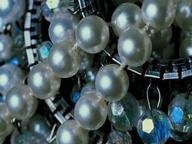Quiz Answer Key and Fun Facts
1. Rings representing love, betrothal and marriage probably are worn today at least as much for symbolic reasons as for ornament. Which statement is true?
2. The wedding rings of the British royal family are traditionally made of Welsh gold, prized as the purest gold found in nature. At the end of the 20th century, how many gold mines were still commercially worked in Wales?
3. Richly ornamented wedding bands were popular during the Renaissance, but when Mary Tudor, queen of England, was asked which style and gems she preferred, she requested a plain hoop of gold with no decoration. What reason did she give?
4. In medieval England, widows sometimes took vows of celibacy and wore special rings of widowhood. This was encouraged by their children, and husbands often bequeathed their estates to their widows specifically on this condition. What was the usual reason given?
5. Placement of the wedding ring has varied, depending on the customs of the time. On which finger(s) have wedding rings been worn?
6. Platinum first became a popular metal for wedding rings at approximately what time?
7. The custom of the double-ring wedding was revived and became popular during the Second World War.
8. Has it always been considered bad luck to be married with a second-hand ring?
9. Gold rings of the early 20th century are sometimes found with platinum applied over the traditional gold.
10. Rings made in the 14th-17th century are often found with secret messages engraved inside that only the wearer knew. What name is given to these?
Source: Author
ragiel
This quiz was reviewed by FunTrivia editor
Bruyere before going online.
Any errors found in FunTrivia content are routinely corrected through our feedback system.

